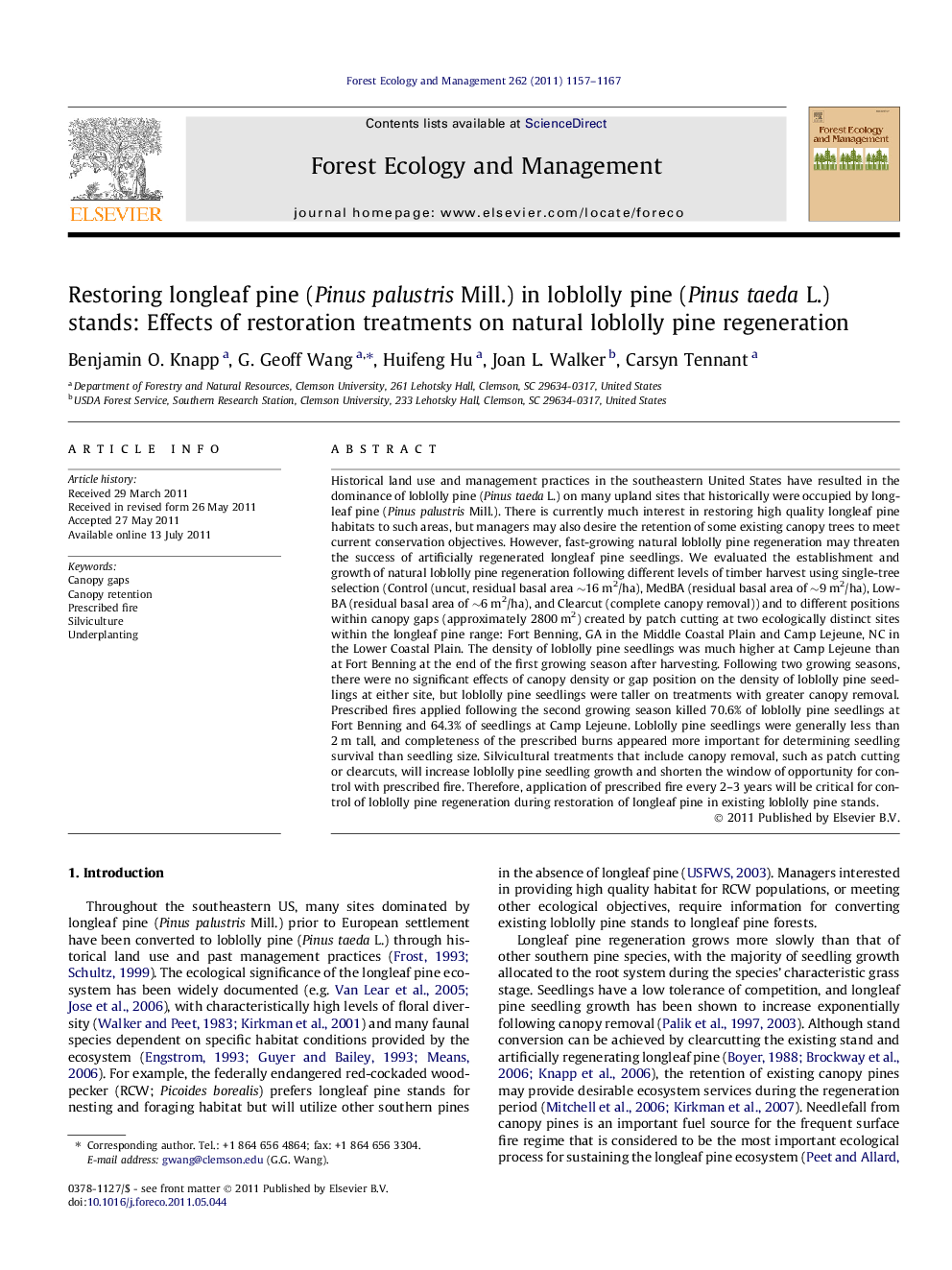| Article ID | Journal | Published Year | Pages | File Type |
|---|---|---|---|---|
| 87990 | Forest Ecology and Management | 2011 | 11 Pages |
Historical land use and management practices in the southeastern United States have resulted in the dominance of loblolly pine (Pinus taeda L.) on many upland sites that historically were occupied by longleaf pine (Pinus palustris Mill.). There is currently much interest in restoring high quality longleaf pine habitats to such areas, but managers may also desire the retention of some existing canopy trees to meet current conservation objectives. However, fast-growing natural loblolly pine regeneration may threaten the success of artificially regenerated longleaf pine seedlings. We evaluated the establishment and growth of natural loblolly pine regeneration following different levels of timber harvest using single-tree selection (Control (uncut, residual basal area ∼16 m2/ha), MedBA (residual basal area of ∼9 m2/ha), LowBA (residual basal area of ∼6 m2/ha), and Clearcut (complete canopy removal)) and to different positions within canopy gaps (approximately 2800 m2) created by patch cutting at two ecologically distinct sites within the longleaf pine range: Fort Benning, GA in the Middle Coastal Plain and Camp Lejeune, NC in the Lower Coastal Plain. The density of loblolly pine seedlings was much higher at Camp Lejeune than at Fort Benning at the end of the first growing season after harvesting. Following two growing seasons, there were no significant effects of canopy density or gap position on the density of loblolly pine seedlings at either site, but loblolly pine seedlings were taller on treatments with greater canopy removal. Prescribed fires applied following the second growing season killed 70.6% of loblolly pine seedlings at Fort Benning and 64.3% of seedlings at Camp Lejeune. Loblolly pine seedlings were generally less than 2 m tall, and completeness of the prescribed burns appeared more important for determining seedling survival than seedling size. Silvicultural treatments that include canopy removal, such as patch cutting or clearcuts, will increase loblolly pine seedling growth and shorten the window of opportunity for control with prescribed fire. Therefore, application of prescribed fire every 2–3 years will be critical for control of loblolly pine regeneration during restoration of longleaf pine in existing loblolly pine stands.
► Land managers are interested in converting loblolly pine stands to longleaf pine. ► Abundance of natural loblolly pine regeneration varies by year and site. ► Canopy removal increases loblolly seedling growth and may affect fire management. ► Heterogeneity of prescribed fire results in survival of some loblolly pine seedlings. ► Ability to control loblolly pine regeneration affects longleaf pine restoration.
